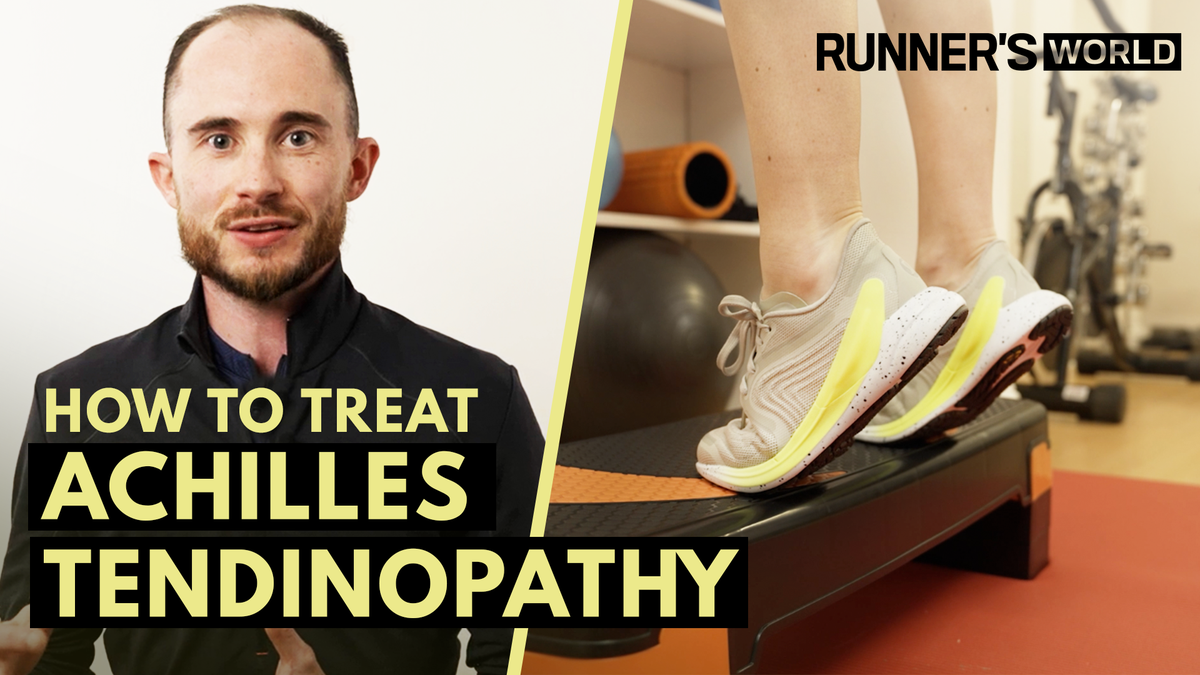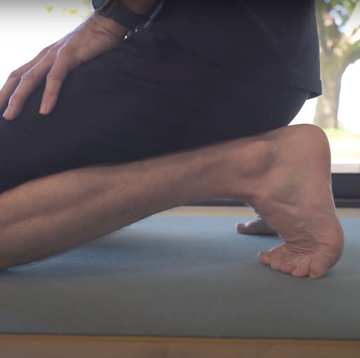If you're suffering with pain in the back of the heel, you may have picked up an achilles tendon injury. Here's what you need to know about different types of achilles tendon injuries – what causes them, how to fix them and, importantly, how to prevent them.
What are the symptoms of an achilles tendon injury?
Pain in the back of the heel, the tendon just above it or possibly anywhere up to where the calf muscles form a V on the back of the leg (about halfway down). The pain can range from mild to debilitating.
What causes achilles tendon injuries?
The achilles tendon, which is of course named after the legendary Greek warrior whose only vulnerability was his heel, is a thick, rope-like tendon about 10cm long connecting the gastrocnemius and soleus muscles in the lower leg to their insertion points at the heel bone (calcaneus).
Achilles tendon injuries can occur in several places. Occasionally, they occur higher up the muscle, in which case they’re referred to as calf strains. These injuries tend to heal quick due to the abundant flow of blood to the muscle.
A more common injury location is the muscle-tendon junction, where the muscles converge into the tendon. This spot is about halfway down the back of the lower leg, where the muscles form a V. These injuries tend to heal on their own, but not as quickly as in the muscular area because the blood flow isn’t as generous.
applying ice for 15 minutes four to six times a day can help reduce inflammation and swelling achilles tendinopathy, Runners World, Part of the Hearst UK Wellbeing Network.
How can you fix achilles injuries?
Knee pain after running: How to spot and fix it: Foot-strengthening exercises for runners, swimming is fine and cycling can work, but only if it’s pain-free. Running is a huge-no-no and will make the injury worse.
Ice it: Is ultra-running bad for the heart.
Stretch it: but not if it brings on any kind of pain. Once you can stretch without pain, do the classic runner’s stretch with your hands against a wall – stand about 2ft (60cm) in front of a wall in a staggered stance, right foot in front of your left. Place your hands on the wall and lean against it. Shift your weight to your back foot until you feel a stretch in your calf. Hold this stretch for 30 seconds on each side, then repeat twice for a total of three sets. Perform this routine daily up to three times a day if you’re really tight.
Strengthen it: Once you’re pain-free, start reconditioning your lower body. Start with eccentric calf raises: stand with your heels hanging off a step, take 10 seconds to lower them, then raise them back up at a normal rate. Also, add plyometric lower-body work like squats, multidirectional lunges and squat thrusts to your weekly strength routine – The most serious achilles injury is to the tendon, called.
How can you prevent achilles injuries?
Watch your foot mechanics: pronation (when the foot rolls inward as you walk or run) can contribute to achilles injuries. Support of stability shoes and/or over-the-counter arch supports Employ dynamic rest.
with achilles injuries, in general: doing this while increasing your footstrike frequency may help you generate better stride mechanics because you’ll be putting a lot less load on your feet, shins and knees. While running, count how many times your right Shin splints how to treat and prevent them in 60 seconds. Aim for 85 to 90 per minute. The best way to prevent achilles tendinitis in the first place is to build limber lower legs. An underlying lack of flexibility, especially in your calf muscles, can be a primary cause of achilles injuries.
Strengthen: a tendon like the achilles starts to hurt because of the load on it. If you want to reduce the loading force, build up the muscles affecting that load so they can take the brunt of it. The exercises below all target your lower leg and can be added to any workout.
Single-leg standing dumbbell calf raise
Grab a dumbbell in your right hand and stand on a step, block or 10kg weight plate. Cross your left foot behind your right ankle and balance yourself on the ball of your right foot, with your right heel on the floor. Put your left hand on something stable – a wall or weight rack, for instance. Lift your right heel as high as you can. Pause, then lower and repeat. Do same number of reps on each side.
Single-leg bent-knee calf raise
Grab a dumbbell and stand as you did for this single-leg standing dumbbell calf raise. The only difference with this move is that you keep both legs bent at the knee throughout. Move your heel up and down using your calf muscle as before.
Split jump (with or without dumbbells)
Stand in a staggered stance, your right foot in front of your left. Lower your body as far as you can. Quickly switch directions and jump with enough force to propel both feet off the floor. While in the air, scissor-kick your legs so you land with the opposite leg forward. Repeat, alternating back and forth with each rep.
Do men and women process pain differently The Athlete’s Book of Home Remedies by Dr Jordan Metzl
















